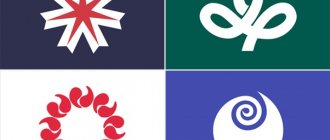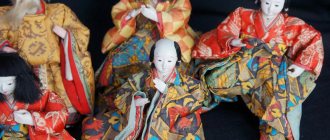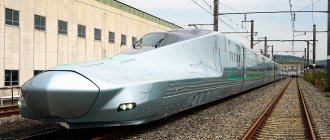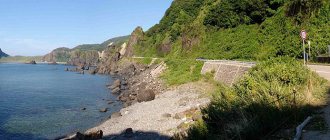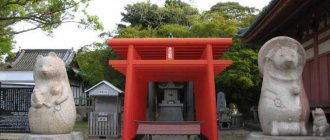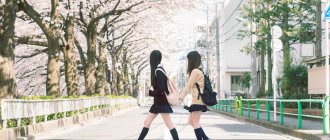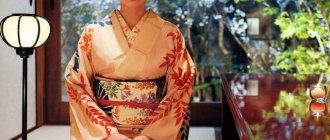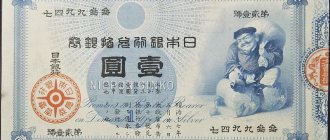Many hot springs in Japan used to be sacred places where Japanese people came to heal their injuries and illnesses. Later, during the Edo period, sick people began to stay in onsen for several weeks or even longer to recover. This is how inns began to appear.
Nowadays, visiting hot springs has become more of an entertainment or a kind of rest and relaxation. Many onsen, in addition to the hot springs themselves, offer stunning views, delicious food, and shopping nearby. This way you can relax and improve your health.
If visiting Japan is not yet part of your plans, then you can get treatment and strengthen your immune system at the DiLUCH sanatorium in Anata. Among other procedures, we strongly recommend visiting the therapeutic massage department, you can find out more about it by following the link https://diluch.ru/lechenie/otdelenie-lechebnogo-massazha.html.
Hakone Onsen
This is one of the popular hot spring areas, located just an hour and a half from Tokyo by car or train. There are many day spas and shops where you can buy souvenirs.
Onsen are located along the Hayakawa and Sukumogawa rivers. You can choose from rooms to suit different tastes, from historical and purely Japanese home-style to large-scale resort hotels.
Location: Hakonemachi, Ashigarashimo-gun, Kanagawa.
WHAT ARE THE RULES OF CONDUCT IN ONSENS?
When visiting onsen, you must follow certain rules. Thus, most onsens do not allow people with tattoos, since such tattoos are associated with the yakuza mafia.
However, there are exceptions - ryokans or onsen are more loyal in this matter. A list of them can be found on the website tattoo-friendly.jp.
Before entering the bathhouse, you leave your clothes in the locker room and change into a yukata robe. They enter the washroom naked with a tenugui towel in their hands; in the bathhouse they place it on their head.
You must shower before diving into the public bath. Making noise, diving and smoking in the onsen is prohibited.
Kusatsu Onsen
This onsen, located in Ganma, is the leading onsen in Japan. A unique symbol of Kusatsu is the Yubatake structure, which is the main source of thermal waters.
There are always a lot of people here because you can visit many hot springs for free, as well as enjoy shopping in local stores. In addition, there are good hotels, hotels and cafes throughout the resort area.
Location: Kusatsumachi, Agatsuma-gun, Gunma.
Interesting information
- Japan is a country where volcanism is common, so there are a lot of hot springs that are used for bathing - about 2,000.
- There are several types of onsen thermal waters in composition: hydrogen sulfide (io-sen), salt (natorimu-sen), carbonated with carbon dioxide (tansan-sen), enriched with iron (tetsu-sen).
- Visiting an onsen is not only a great way to relax. Thermal waters are very beneficial for health; many diseases are treated with their help.
- The most famous onsen in Japan are Sukayu Onsen (Aomori Prefecture), Jigokudani Onsen (Nagano Prefecture), Beppu Onsen (Beppu Prefecture), Aso Onsen (Kumamoto Prefecture) and Dogo Onsen (Ehime Prefecture).
Beppu Onsen
This onsen is the largest in Japan in terms of the number of hot springs and the volume of water they contain.
To get to know this place better, we recommend taking a tour called Beppu Jigoku Meguri (Beppu Hell Tour). This way you can see different types of Jigoku springs, such as: Sea Hell, Blood Pond Hell, White Pond Hell and Tornado Hell. Here you can also try eggs boiled in a hot spring.
Location: Beppu-shi, Oita.
Kurokawa Onsen
The onsen is located about 75 minutes north of Mount Aso in Kumamoto. Almost every hotel here has an open-air hot spring. And if you buy a pass called “Nyuyoku tegata”, you can swim in three different hot springs. Water from the springs has a calming effect on the nerves.
Location: Minami Ogunimachi, Aso-gun, Kumamoto.
Cosmetics and towels
Most private onsen have all the necessary cosmetics, and these are good brands (Shiseido or Kanebo), that is, you don’t need to take creams and shampoos with you. The same goes for towels. Usually each visitor receives two pieces: a large one and a small one. The bathhouses cover your hot body in the locker room, which is very convenient after leaving the furo. A small towel is used to go to the changing room after a hot bath. The towel should not be soaked in furo or twisted. It should be folded into a square or rectangle and placed on your head, then go into the water. You must not touch anyone with the towel. It is also unacceptable to spread it on stones or the edge of the furo. Of course, if a bather rents a kashikiri, he can safely put his towel even on the floor, which otherwise will cause a full-fledged scandal.
Women should remember to remove their makeup. Entry into the furo with a painted face is prohibited. However, at this temperature, the paint will quickly flow, and black circles a la “panda” will appear around the eyes.
In public baths, you need your own towel and cosmetics, and you should also take a clean set of clothes with you, as a visit to the onsen is a real refreshment and cleansing of the body.
Ibusuki Onsen
You can get here by special bus from Kagoshima Airport in 95 minutes. This onsen is famous for its natural sand bath called Sunamushi. In short, they will take you to the beach and bury you in hot sand until only your head remains. This procedure has a beneficial effect on nerves and muscle pain, and also has a rejuvenating effect.
Location: Ibusuki-shi, Kagoshima.
Dogo Onsen Honkan, Matsuyama, Ehime, Shikoku
Dogo is one of Japan's grandest and most majestic public baths, inspired by the bathhouse in Hayao Miyazaki's Spirited Away. According to legend, it was in this place that a white heron dipped its injured paw into hot waters and healed it. The baths were erected in 1894 and have remained almost unchanged since then. They are divided into three classes of service on three floors. The cheapest ticket is in the "Bath of the Gods" (Kami-no-yu, most locals go there. With a more expensive ticket, go to the "Bath of the Spirits" (Tama-no-yu), they are more spacious, there are fewer people there and there is a view from the locker room to a small garden. After swimming, you can relax in a special room on the second floor. The most expensive class is on the third floor: there are private rooms, yukata robes are provided, green tea is poured and rice cookies are given out after swimming.
Cost: 410-1550 yen, depending on the class of service.
Opening hours: 06:00—23:00; Time spent in the onsen: 60-80 minutes.
5-6 Dogoyunomachi, Matsuyama, Ehime, 790-0842.
The city can be reached by JR trains from Honshu Island. Direct daily flights connect Matsuyama with Osaka, Nagoya and Tokyo.
Arima Onsen
This is one of the oldest and most famous hot springs in Japan. It is located an hour's drive from Osaka. It is famous for a hot spring called Toyotomi Hideyoshi, named after one of the most powerful rulers. Also popular are the reddish-brown hot spring called Kinsen (Golden Spring) and the clear hot spring called Ginsen (Silver Spring).
Location: Kita-ku, Kobe-shi, Hyogo.
WHAT ARE HOT SPRINGS IN JAPAN
Hot springs hold a special place in Japanese culture. Several factors indicate their importance.
Thus, not every hot spring can be recognized as an onsen: such a status is assigned to a source only if it meets certain criteria, which are prescribed in the 1948 law.
Onsen is a mineral hot spring of natural (volcanic) origin with water temperatures ranging from 25 to 100 degrees. According to the law, the mineral composition of the source must include one or more elements.
Today, about 2.5 thousand hot springs fall under this definition of “onsen” in Japan. Many of them are members of the specially established Association of Thermal Resorts of Japan.
You can read more about the medicinal properties of various onsen in Japan in this review.
Gero Onsen
This onsen is located in Gifu and is one of the three most famous hot springs in Japan. The water in the springs is alkaline.
We also recommend visiting the village of Gero Onsen Gasshomura, where you can see houses with steep rafter roofs. From spring to autumn, the Ideyu Ichi fair is held here in the mornings, which we also recommend visiting.
Location: Gero-shi, Gifu.
HOW A JAPANESE THERMAL RESORT IS SET UP
The vast majority of Japanese go to hot springs not for treatment, but for relaxation, relieving fatigue and enjoying nature. There are even special tours to five or six springs in different regions of the country.
There are still few Russians among tourists visiting onsen, but Japan is popularizing this type of recreation, and, probably, Japanese onsen will soon find their fans among Russian adherents of SPA holidays. More and more travel agents working with Japan recommend their tourists to set aside 1-2 days along the route to visit onsen.
In Japan, there are more than 20 thousand hotels with hot baths - traditional ryokans and European-style hotels - near thermal springs. More than 130 million Japanese visit them every year, more than the population of the entire country.
Usually for tourists there is a complex of Japanese-style baths, and their location in the hotel can be different: for example, on the roof, so that the surrounding landscape is better visible, or on the ground floor, so that, after warming up, you can stroll along the path on the seashore and enjoy the sound of waves and the cries of seagulls. Baths on onsen were traditionally arranged jointly - kyodo-buro. Recently, men and women sometimes use them alternately, during the allotted hours. The order is often changed: in the evening, ladies go to the left, and men - to the right, and in the morning, vice versa.
This happens when pools and baths have different views. In richer hotels near springs (ryokans), there are separate baths, and often a whole water complex with different temperatures and mineral composition. And even with traditional baths from different countries.
The bath can be large or small, the water in it is hot (but usually not higher than 43 degrees) or lukewarm, cloudy or clear. A special treat is rotenburo - outdoor landscaped baths or wooden baths overlooking the garden, forest, mountains, and sea. When choosing a source, it is better to find out in advance about the presence of rotenburo in it.
In expensive hotels, an outdoor ofuro bath with a view of nature is located right in the room. Ryokans with rotenburo or teien-buro (garden baths) are more popular in the summer. In cold weather, preference is given to indoor ones.
Of course, there are many “wild” places where there are hot springs, next to which there are no hotels in principle, but only the most sophisticated lovers of communication with nature get there.
